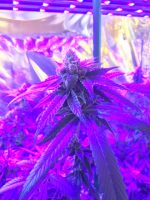Cannabis risks have always outpaced the availability of insurance, in large part because of its status as a federally illegal substance and the dangers in extraction and production. But it now shares many of the same risks as other industries — catastrophic crop damage, cyber risk and a shortage of skilled workers.
With legalization becoming more common, the industry is positioned for enormous growth despite these challenges. However, enterprises that will benefit the most are those best positioned to manage risk.
Here are four obstacles to growth in the industry in 2022 and how enterprises can combat them:
Cybercrime will be the top manufacturing risk
Both cybercrime and cannabis have experienced major booms since the start of the COVID-19 pandemic. Cannabis companies watched as healthcare and pharmaceutical organizations were hit hard by cybercriminals in 2020, and now the threat could be headed their way.

For cannabis retailers, the vulnerability lies in their dependence on point-of-sale tech, while the threat for cultivators exists within their strong use of intelligent automation to manage the grow environment. Across the industry, the lack of sophisticated IT security systems is like a beacon for bad actors.
Nearly 60% of cannabis businesses say they haven’t taken the necessary steps to prevent cyberattack, but the winds are changing. Due to these concerns and the growing attention on cybercrime in the industry, cyber coverage is expected to rise 30% or more in 2022, which puts the onus on risk management practices that will help prevent cyberattacks and ensure coverage from insurers concerned about risk.
Barriers to business growth may result in more M&A
As of summer 2021, 18 U.S. states have legalized adult use and 37 states have legalized medical cannabis.
While this is opening opportunities for many cannabis businesses, the U.S. remains a complicated market. Federal regulations continue to hinder even more cannabis industry growth by restricting lending to the industry from traditional banking and financial institutions. While it’s not illegal to do service with the cannabis industry, many institutions stay away due to its high risk.
Smaller cannabis companies are impacted most heavily by this barrier and await passage of the Secure and Fair Enforcement (SAFE) Banking and Clarifying Law Around Insurance of Marijuana (CLAIM) Acts to allow easier access to capital. Together, these two acts of legislation will provide guidelines on how to work lawfully with legal cannabis businesses and prohibit penalizing or discouraging institutions from working with them.
In the meantime, M&A activity is expected to increase in 2022 as large cannabis businesses have the means to access capital and acquire these small companies. This includes Canadian cannabis companies, unburdened by federal restrictions, who are expected to increase their cross-border mergers and acquisitions.
Severe weather isn’t easing up
Extreme natural catastrophes are no longer rare, and they have only added greater uncertainty to the industry which has always had difficulties securing crop insurance.

Photo: NASA
For example, policies that transfer wind and hurricane damage risk in Florida or wildfire and smoke taint in California are virtually non-existent for cannabis — and for outdoor growers, a single weather event can wipe out an entire crop with no recourse.
One possible solution for cannabis companies that cannot secure traditional crop insurance is parametric insurance, which pays out in full when a weather element reaches a threshold, regardless of the actual damage.
Growers with indoor operations, or those considering moving that way, must cope with energy conservation initiatives. Measures like the one in California that would require indoor growers to use LED lighting by 2023 could cost the industry millions and present a direct threat to small operations’ viability. This makes it important for cannabis producers to institute conservation measures and undertake risk mitigation measures like improved safety measures at indoor growth facilities ahead of 2022 renewals.
As a continually emerging market, cannabis risks are great. Adding to these pressures is the growing impacts of climate change and cybercrime raising the bar even further. Growth for the cannabis industry in 2022 will depend upon strong risk management solutions and the ability for cannabis companies to implement them.







